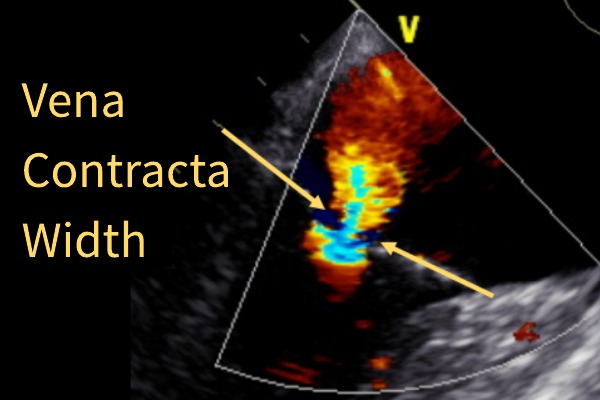It is estimated that over 4 million people in the United States have significant mitral regurgitation. Untreated severe mitral regurgitation decreases life quality and has a high mortality rate. With the advancement of technology, including the MitraClip, more procedures and treatment options are available. The accurate quantification of mitral regurgitation plays a critical role in determining the best course of action for patients living with MR. This week we will review how to measure the MR Vena Contracta Width.
First of all, its important to remember that the process of MR quantification is an integrated process that includes:
In this blog, we will cover vena contracta width (VCW). The vena contracta width is just one measure derived from color Doppler. A complete review of MR Quantification can be found on our learning platform cme.cardioserv.
The Vena Contracta is the narrowest portion of the MR jet and in the presence of a circular-shaped MR orifice, the cross-sectional area directly represents the orifice area which is a true parameter of MR severity.

The VCW values that are relevant to Doppler Quantification of mitral regurgitation are the high and low ends of the spectrum. Any value that is less than 0.3cm is an indicator of mild MR and any VCW value that is equal to or greater than 0.7cm is an indicator of severe MR.
The values in between do not represent moderate but rather indicates a need for additional quantification.

Tip: Must see convergence zone for accurate measurement!
The Vena Contracta Width is a semi-quantitative measure for the assessment of MR severity. It is one measurement towards the bigger picture of an integrated approach to MR quantification. For a complete review of MR Quantification see our 5 credit CME course: Mastering Advanced MR Quantification
Other Blogs you may like:
References:
American Society of Echocardiography. Recommendations for Noninvasive Evaluation of Native Valvular Regurgitation




Dec
2020